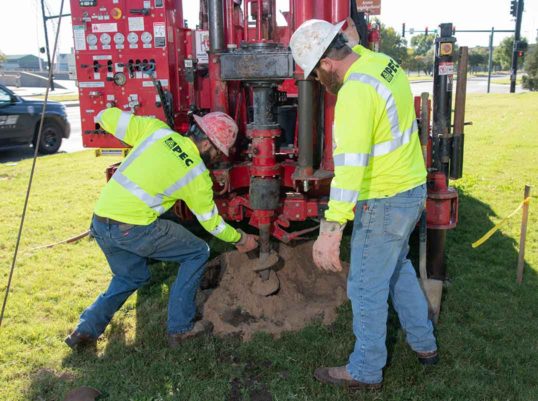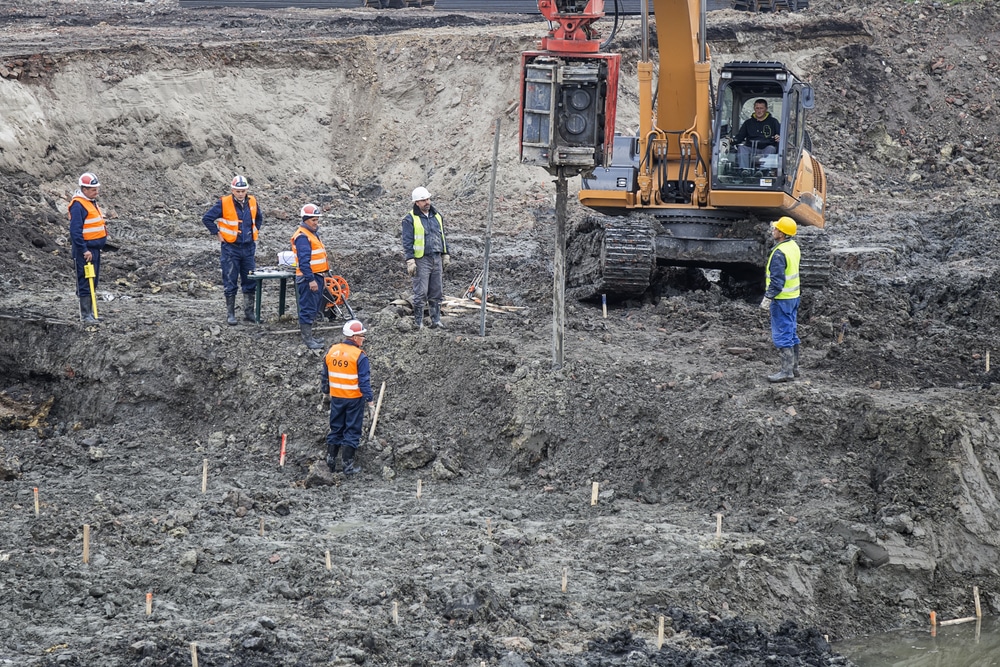Geo Tech Engineer: Enhancing Site Assessments with Advanced Geotechnical Techniques
Geo Tech Engineer: Enhancing Site Assessments with Advanced Geotechnical Techniques
Blog Article
The Interdisciplinary Approaches in the Geotechnical Sector: Linking the Void Between Design, Geology, and Environmental Scientific Research for Optimum Project Outcomes
The assimilation of engineering, geology, and ecological scientific research within the geotechnical sector is not just useful; it is important for accomplishing optimal task outcomes. What techniques might arise to facilitate this important partnership and boost the efficacy of geotechnical techniques?
Significance of Interdisciplinary Partnership
The relevance of interdisciplinary cooperation in the geotechnical market can not be overemphasized. Effective geotechnical projects need the assimilation of diverse experience from various areas, including engineering, geology, and ecological science. This collaboration makes certain that all aspects of a project are thought about, resulting in comprehensive solutions that attend to intricate obstacles.
When working in isolation,Interdisciplinary cooperation fosters development by allowing professionals to share understandings and approaches that might not be obvious. By leveraging the staminas of several disciplines, teams can identify possible threats, optimize design procedures, and enhance the sustainability of geotechnical tasks. Moreover, such partnership advertises an alternative understanding of site-specific conditions, which is important for precise analysis and decision-making.
The intricacy of geotechnical tasks necessitates a coordinated approach to analytical. Eventually, interdisciplinary cooperation is crucial for progressing finest practices and accomplishing excellence in the geotechnical industry.
Trick Duties of Each Technique
Cooperation among numerous disciplines is not simply advantageous; it is important for the effective implementation of geotechnical projects. Each discipline-- engineering, geology, and environmental scientific research-- plays a distinctive yet interconnected duty that adds to predict efficacy and sustainability.
Geotechnical designers are largely in charge of making structures and making certain structural integrity. They examine dirt and rock residential or commercial properties to evaluate load-bearing capacities, offering essential information for risk-free building practices. Their proficiency makes it possible for the formula of ingenious solutions to complex difficulties.

Environmental scientists assess the potential impacts of construction on communities and water resources. They perform environmental assessments and create mitigation techniques to reduce adverse results. By integrating eco-friendly factors to consider, they guarantee conformity with policies and promote sustainability throughout the task lifecycle.
Case Studies of Successful Integration
Successful assimilation of geotechnical self-controls can be exemplified via various study that highlight the efficiency of synergy in attending to complex engineering challenges. One remarkable example is the construction of the Hong Kong-- Zhuhai-- Macau Bridge, where a collective approach entailing geotechnical design, geology, and environmental scientific research was vital. Engineers and geologists operated in unison to assess the seabed problems and maximize the foundation design, making sure security and lessening environmental effect.
An additional impactful case is the renovation of incline security in the San Francisco Bay Location, where an interdisciplinary group incorporated geotechnical analysis with ecological assessments. By integrating hydrological studies and geological studies, the group properly recognized prospective landslide dangers and executed effective mitigation steps, enhancing safety and security and sustainability.
Furthermore, the redevelopment of Brownfield sites frequently requires a multidisciplinary method. In one situation in Chicago, cooperation among geotechnical engineers, environmental researchers, and urban coordinators resulted in the successful removal of polluted soil, permitting for the risk-free makeover of the website into an area park. These instance researches show that interdisciplinary cooperation not only addresses technical obstacles however also cultivates cutting-edge solutions that benefit both these details jobs and neighborhoods.
Challenges in Multidisciplinary Projects

Furthermore, collaborating schedules and process among various groups can be bothersome, particularly when each technique has distinct task turning points and deliverables. This imbalance can result in hold-ups and increased prices. The obstacle of resource allowance likewise looms huge; making certain that specific knowledge is offered at critical times calls for cautious planning and insight.
Finally, regulatory compliance poses another considerable obstacle. Each technique might deal with various regulative frameworks, and straightening these demands to fulfill project goals can be taxing and complicated. Attending to these obstacles necessitates solid leadership and reliable interaction methods to promote partnership and guarantee that multidisciplinary groups function cohesively towards shared goals.
Future Trends in Geotechnical Practices
As the geotechnical market develops, arising fads are reshaping methods to address the obstacles dealt with in multidisciplinary projects - geotechnical engineers. One considerable trend is the boosted combination of sophisticated technologies, such as expert system and artificial intelligence, right into geotechnical analysis and layout. These innovations boost predictive modeling and threat assessment, allowing engineers to make even more educated choices throughout the project lifecycle

Moreover, the fostering of electronic twins and real-time tracking systems is becoming more widespread. These devices facilitate continuous evaluation of soil conditions and structural performance, enabling timely interventions when concerns emerge.
Conclusion
To conclude, the assimilation of engineering, geology, and environmental scientific research is essential for attaining optimum results in the geotechnical industry. Interdisciplinary cooperation cultivates technology, boosts analytical abilities, and straightens look at here now technical demands with ecological sustainability. Successful instance researches illustrate the advantages of this strategy, while recognizing the challenges dealt with in multidisciplinary projects. Looking in advance, accepting these joint methods will be necessary for navigating future fads and advancing the area of geotechnical engineering.
The integration of engineering, geology, and ecological science within the geotechnical industry is not merely helpful; it is necessary for achieving optimum task outcomes. Reliable geotechnical projects require the combination of diverse proficiency from different areas, consisting of engineering, geology, and ecological science.Navigating the complexities of multidisciplinary projects in the geotechnical market offers several substantial challenges.As the geotechnical market progresses, arising fads are improving methods to resolve the difficulties dealt with in multidisciplinary jobs. Geotechnical engineers are progressively collaborating with environmental researchers to make certain that jobs line up with sustainability goals and conform with regulative demands.
Report this page